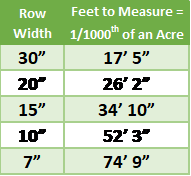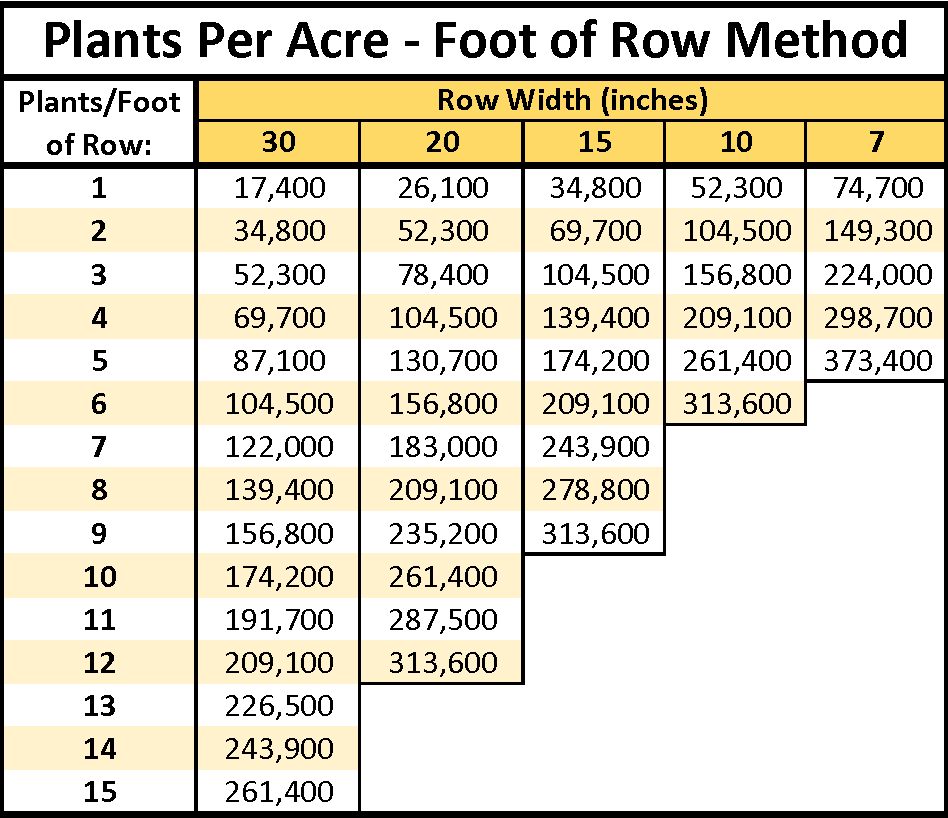Once the rush of planting has slowed or ended, sitting back and relaxing is not the best option to maximize a grower’s soybean acres. When the soybeans have emerged, the next step is to scout those acres to plan for the next step. Taking final stand counts and investigating for emerging issues such as weeds and insects will allow a grower and his local CCA to begin working on a soybean success plan.
Final stand counts are not directly linked to final yield like corn populations are, but they can still provide valuable insight to a grower. By taking stand counts, growers can better evaluate their germination and emergence and identify the strengths and weaknesses of their planting pass. There are two easy ways a grower can determine their final stand. First, using the 1/1000th of an acre method, and second with the plants per foot method. Both are explained below.
 1/1000th of an Acre:
1/1000th of an Acre:First, measure 1/1000th of an acre based on your row width using the following chart. Next, count the number of plants in the marked off area and multiply by 1,000. Repeat several times throughout the field and average them together.
Estimate Plants Per Foot:
A way to quickly estimate the final stand is to count the number of plants in a 12” section of the row and use the following chart to estimate population. As with any method, take a count in several different parts of the field to gain a more accurate estimation.

While out evaluating final stands there are several other important items to be on the lookout for and take notes on:
- Dig up plants to evaluate for seed rots and seedling blights.
- Planting issues such as planting depth and/or missing plants.
- Is there any feeding on cotyledons caused by bean leaf beetles?
- Weed pressure: Do you have broadleaves and/or grasses? What are their heights.
- The uniformity of the stand and emergence rates.
All the information that can be gained in an early season evaluation can help growers identify areas for future improvement and/or areas to address soon and help make better educated decisions as the season progresses.
Editor’s note: The Plants Per Foot chart was updated 5/13 to correct the estimated population in a 30 inch row for 10 plants/foot.
 1/1000th of an Acre:
1/1000th of an Acre: While out evaluating final stands there are several other important items to be on the lookout for and take notes on:
While out evaluating final stands there are several other important items to be on the lookout for and take notes on:

 and then
and then